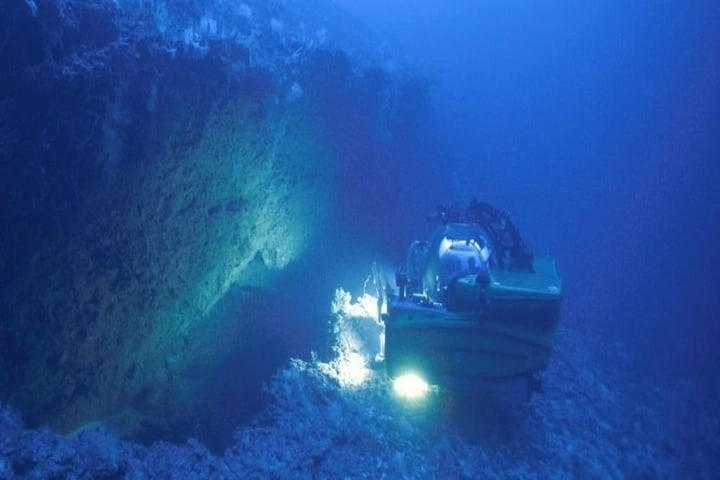Humankind is constantly at the mercy of Nature and its forces and this was emphasised when it was found that the Red Sea has underneath its waters such potent forces which when unleashed would be perilous for people living on the coast of Saudi Arabia and Egypt.
This threat was discovered by Sam Purkis when he looked out of his submarine window at the depth of 900 metres or 3,000 feet in Tiran Strait, as per a report in sciencealert.com. Stunned he was to see in the light of the vehicle’s flashlight a huge abyss – three meters wide and eight meters tall, that is 10 feet by 26 feet.
Interestingly, the research voyage that found this landslide was financed by a developer of the Saudi Arabian coastline.

A geoscientists at the University of Miami, Purkis, who is one of the authors of the study on this subject, which was published in Geophysical Research Letters, recalling the moment said: "Immediately, I realized that what we were looking at was the result of some geological force, which had broken the seafloor.”
It was a landslide that had taken place under the sea and it was perhaps this that had prompted waves 10 metre high that hit the coastline of Egypt about 500 years ago.
What makes the situation precarious today is that the land block is swinging on the edge and models predict that a slip could lead to a second tsunami that will be twice bigger than the one that hit 500 years ago.
Sharing more details Purkis explained: “Just a little shake in the wrong place and the whole wall could fail, leading to a much larger tsunami than occurred 500 years ago. That area of Egypt, as well as Saudi Arabia, which are urbanizing so rapidly, have certain hazards which haven't been previously recognized, but they need to be, to avoid a future catastrophe."
The Red Sea is vulnerable to earthquakes as it is a maritime rift – meaning with the two tectonic plates that border it gradually shifting, the sea is spreading. Now the finding of the landslide makes this area prone to tsunami.
The presence of slope failures in straits and other narrow passages make them unsafe as waves could quickly make a landfall there.
The authors of the study stated that a 20-metre-high tsunami in Tiran Strait could "gravely threaten the rapidly urbanizing coastline" of Egypt and Saudi Arabia. An Egyptian resort town lies directly in the path of the wave.
Five hundred years ago when the slip was just 100 feet or 30 metres, the waves were so strong that they reached the shore merely in minutes. If the slip is more than 50 metres, then models predict that Sharm El Sheikh, the resort city of Egypt, will feel the first impact. It will take a minute and thirty seconds with the waves reaching as high as 21 metres crashing on the shore.
A 100 metre of the land slip could convert the waves reaching Sharm to 35 metres while at Mousa Bay located a little farther north, the waves could actually top 45 metres, reaching there in less than three minutes.
Also read: Under Africa’s serene and scenic Lake Kivu, a time bomb is waiting to explode
A little later, the coastline of Saudi Arabia would be affected though with smaller waves.
Highlighting an important aspect in their study, the authors observed: "Conspicuous in all simulations is how the bathymetry of the Straits confines and directs the tsunami. The wide and deep water to the north allows the wavefront to progress unhindered up the Gulf of Aqaba. To the south, the narrow and shallow Straits restrict wave entry into the Red Sea."
It is not difficult to understand as to why records of historical events do not mention the tsunami which happened 500 years ago. Neither there was an earthquake nor the region where Sharm is now located was populated. It was a base for fishermen occasionally which means very few people would have witnessed the event.
However, the present-day scenario is different as studies made by submarines can be vital as they can point out how prone to disaster the infrastructure on the coastline are and how they put communities at risk.
Advance information about the occurrence of tsunamis could be very useful in saving not just lives but also infrastructure and thus the landslides under the Red Sea must be tracked, the scientists stressed.




















